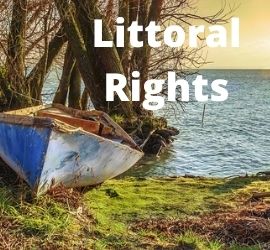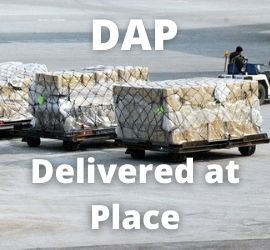What are Littoral Rights?
 Littoral rights refer to the legal use and enjoyment of the shoreline for land that borders a pooled body of water like a pond, lake, or sea.
Littoral rights refer to the legal use and enjoyment of the shoreline for land that borders a pooled body of water like a pond, lake, or sea.
Littoral land refers to land that borders a pooled body of water, such as a lake, ocean, or sea. This differs from riparian land that borders a flowing water source like a river or stream. Littoral rights are generally concerned with the legal use and enjoyment of the shoreline. Littoral proprietors are occupants of land that border these bodies of water. However, individuals do not have title to or ownership of the water.
Nevertheless, property owners whose land adjoins bodies of water have a reasonable right to the use of the water, but the water is not theirs. Therefore, there are limitations to what a property owner can do with that water.
What is Littoral Land?
Littoral land refers to land that is located next to a pooled body of water. Littoral land includes land that is situated next to a pond, lake, ocean, or sea. On the other hand, riparian land is a property located next to flowing waterways like a river, stream, or brook.
Water rights do not always correspond with land ownership, but sometimes real estate ownership does include rights to the adjacent bodies of water. Riparian rights are those rights and obligations that are incidental to ownership of land adjacent to or abutting watercourses such as navigable streams and rivers. Littoral rights are a landowner’s claim to use of the body of water bordering his or her property as well as the use of its shore area.
In other words, if the body of water is in motion, like a stream or river, the abutting owner is called a riparian owner. If the water is not flowing, like in the case of a pond, lake, or ocean, the abutting owner is called a littoral owner. The word riparian literally means riverbank.
Riparian Rights
Riparian Rights are rights and obligations incidental to ownership of land adjacent to or abutting watercourses such as streams and rivers. Examples of rights might include the right to irrigation, swimming, boating, and fishing. Rights might also include ownership of additional land and silt deposited by the natural action of water. This action can actually increase the size of the property. Riparian rights do not attach except where there is a water boundary on one side of the particular tract of land claimed to be riparian. These rights are held in common with other riparian owners to make reasonable use of the waters that flow past. However, the obligation exists that such use does not alter the flow of water or contaminate the water. In addition, an owner of land bordering on a non-navigable stream typically owns the land under the watercourse to the center of the watercourse.
Littoral Rights
Littoral Rights are those rights and obligations that are incidental to ownership of land bordering a body of water. This includes land abutting the shore of a sea or ocean and thus affected by the tide currents. Landowners with littoral rights have unrestricted access to the waters but own the land only to the median high-water mark. After this point, the land is owned by the government. Water rights are appurtenant. This means they are attached to the land and not to the owner. In other words, if an oceanfront property is sold, the new owner gains littoral rights. Conversely, the seller relinquishes his or her rights.
Littoral Rights and Access to Your Boat
Shoreline residents must share the public trust area with their fellow citizens. However, every coastal property owner enjoys unique legal rights by virtue of owning waterfront land. An upland property owner has the right to access a public road. The same concept is true for littoral property owners. A coastal property owner has an exclusive right to access navigable water from his or her property. The littoral right of access provides the property owner reasonable access to the water from his or her property.
Reasonable access can mean launching a small boat directly from the shore. Or, it might be considered reasonable to use a mooring. A dock may be suitable for the site conditions and properly permitted by DEEP and the U.S. Army Corps of Engineers. However, littoral access does not imply a right to build whatever size dock or wharf a property owner wishes. Also, it does not mean that a littoral owner may routinely exclude boats or moorings from the waters in front of his or her property.
In terms of access, navigable waters are the equivalent concept to a public road. A dock serves the same purpose as a private driveway. A littoral landowner may not exclude the public from lawful uses of navigable water. This is similar to an upland owner who cannot exclude the public from driving or walking on the street in front of his or her house. However, a duly authorized dock or other littoral structure is private property. As such, no one can legally interfere with the exercise of this right of access. The same concept holds true for upland property owners. Others cannot use or block someone’s private driveway. (Source: portal.ct.gov)
Up Next: What Is a Traunch?
 A Traunch is one portion in a series of allotments or payments. Usually, for a specific purpose with measured objectives required for future payments
A Traunch is one portion in a series of allotments or payments. Usually, for a specific purpose with measured objectives required for future payments
A traunch is one of a series of payments or allotments scheduled to be paid out over a specified period. Future payments are often subject to achieving certain performance metrics. It is commonly used in finance and venture capital (VC) when referring to the fundraising rounds used to finance startup companies. The term traunch originates from the French word tranche which means to slice or to cut.
In banking and finance, a traunch refers to splitting or dividing payments. For example, if the bank agrees to traunch your personal loan, it means it will fund the loan based on allotments. Investors, banks, and other lenders use a traunch format to limit risk when providing loans or funding to individuals or companies.




